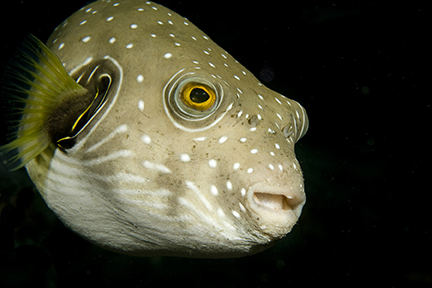News
Jim & Cary Yanny’s Guide to Diving in Indonesia
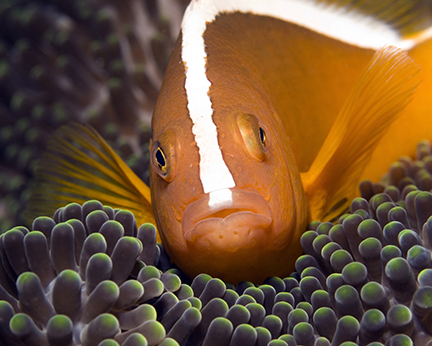
Part 2: Manado and Bunaken National Park
Coelacanth? Really?
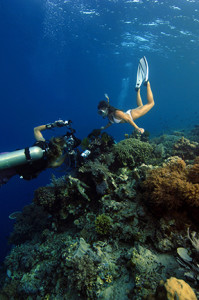 The National Geographic TV documentary I was watching was following an expedition to exotic Indonesia to search for one of earth’s natural unicorns, the coelacanth. This truly prehistoric fish had previously been thought to only exist in the waters off Southern Africa. That was until an eminent marine biologist, Dr Mark Erdmann, had been alerted of an amazing discovery in a local fisherman’s net; a large, chunky fish measuring two metres in length, with sharp teeth, stumpy tail fin and thick, leathery scales. Mark couldn’t believe what he was hearing and rushed to Manado Fish Market to see for himself…and there it was… a coelacanth. In Indonesia!
The National Geographic TV documentary I was watching was following an expedition to exotic Indonesia to search for one of earth’s natural unicorns, the coelacanth. This truly prehistoric fish had previously been thought to only exist in the waters off Southern Africa. That was until an eminent marine biologist, Dr Mark Erdmann, had been alerted of an amazing discovery in a local fisherman’s net; a large, chunky fish measuring two metres in length, with sharp teeth, stumpy tail fin and thick, leathery scales. Mark couldn’t believe what he was hearing and rushed to Manado Fish Market to see for himself…and there it was… a coelacanth. In Indonesia!
Soon the world of marine biology was on fire. This was the first time a coelacanth had been seen in Asia. In fact, it was the first time for one to be known to live anywhere other than South Africa, Mozambique or the Comoro Islands off Madagascar. The discovery was truly sensational. So big that it contributed to the group of five ‘Bunaken’ islands lying just offshore from Manado Bay being made one of Indonesia’s eighteen national parks in 1991, which it has been ever since.
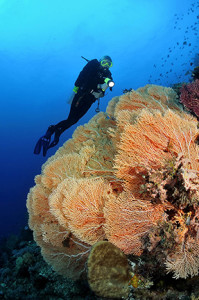 As I watched that show telling the story of the research vessel plying Bunaken’s waters, the crew dropping ROVs over the side as they swept the steep coral walls in search of this most elusive of creatures, I turned and looked out of my living room window at the blue sea beyond at an impressive sight of a mid-sea volcano rising from the 2000m-deep sea to an azure sky filled with gathering angry storm clouds.
As I watched that show telling the story of the research vessel plying Bunaken’s waters, the crew dropping ROVs over the side as they swept the steep coral walls in search of this most elusive of creatures, I turned and looked out of my living room window at the blue sea beyond at an impressive sight of a mid-sea volcano rising from the 2000m-deep sea to an azure sky filled with gathering angry storm clouds. 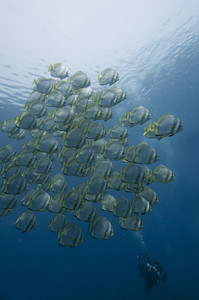 The volcano is Manado Tua, or ‘Old Manado’. To its east is Bunaken, low-lying and the largest of this archipelago of five islands. A strange feeling passed through me as I realised how incredible it was, and how privileged we were, to be living in a place that warranted the great Nat Geo to send a documentary film crew to! Not only that, but to be running a dive centre that dived the very same islands Nat Geo was here to explore on a daily basis!
The volcano is Manado Tua, or ‘Old Manado’. To its east is Bunaken, low-lying and the largest of this archipelago of five islands. A strange feeling passed through me as I realised how incredible it was, and how privileged we were, to be living in a place that warranted the great Nat Geo to send a documentary film crew to! Not only that, but to be running a dive centre that dived the very same islands Nat Geo was here to explore on a daily basis!
As the documentary revealed, in two whole weeks of searching with their high-tech subs, the Nat Geo crew didn’t find a single coelacanth. Despondent, and with a last throw of the dice before boarding their plane back home, they abandoned the deeper waters around Bunaken’s islands and dropped an ROV next to a fringing reef on the North Sulawesi mainland coast, just down the road from our dive centre. There, at about 200m depth, they found two coelacanths in a cave. It was even more bizarre to think that we had probably been driving our boat over them all these years without knowing it. (NB coelacanths live in deep places. Don’t plan a dive holiday to see them!)
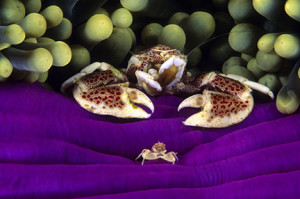 Manado is where we did our first ever dive in Indonesia back in 1999 on a dive site on Manado Tua volcano, ‘Muka Gereja’, meaning ‘in front of the church’. The site lives up to its name; coming up from a glorious half-light dive on an extensive hard coral field swept by schools of fusiliers and anemones housing many different species of clown fish, we’ll never forget the sights and sounds that greeted us as we hit the surface. It was a sunny Sunday morning and the sea was as flat as the proverbial pancake, so we inflated our BCDs and pulled off our masks to share our enjoyment of the dive with each other as we gently finned away from the reef to our approaching dive boat. In front of us was an 800m high volcano covered in palm trees. At water level on the coral sand beach was a little white church built in a Dutch or Portuguese style – not sure which – but it was all spires and crosses and its bells were ringing out calling its congregation to prayer. A pig ran down the beach past the church grunting so loudly that we could easily hear it from 200m away. The sun was hot and we realised we were in a rare and special place and time. So special, in fact, that we went back to Manado the very next year and ended up living there until 2012.
Manado is where we did our first ever dive in Indonesia back in 1999 on a dive site on Manado Tua volcano, ‘Muka Gereja’, meaning ‘in front of the church’. The site lives up to its name; coming up from a glorious half-light dive on an extensive hard coral field swept by schools of fusiliers and anemones housing many different species of clown fish, we’ll never forget the sights and sounds that greeted us as we hit the surface. It was a sunny Sunday morning and the sea was as flat as the proverbial pancake, so we inflated our BCDs and pulled off our masks to share our enjoyment of the dive with each other as we gently finned away from the reef to our approaching dive boat. In front of us was an 800m high volcano covered in palm trees. At water level on the coral sand beach was a little white church built in a Dutch or Portuguese style – not sure which – but it was all spires and crosses and its bells were ringing out calling its congregation to prayer. A pig ran down the beach past the church grunting so loudly that we could easily hear it from 200m away. The sun was hot and we realised we were in a rare and special place and time. So special, in fact, that we went back to Manado the very next year and ended up living there until 2012.
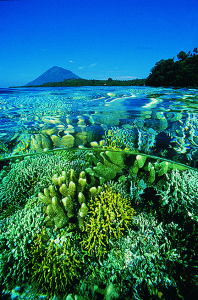 As I’ve said, Bunaken National Park is made up of the five islands of Bunaken, Manado Tua, Siladen, Montehage and Nain plus the southern Park section on the mainland of Sulawesi Island. Most of the diving around these populated islands is on coral-encrusted vertical walls. If you like drift diving you’ll love Bunaken as nearly all dives are done on the drift with the dive boat following your bubbles to pick you up wherever you surface*. Nearly anyone who’s dived Bunaken will tell you that this makes for a very lazy, relaxing and enjoyable dive experience. (If you’re looking for loads of exercise on your dive trip, this is not the place for you!)
As I’ve said, Bunaken National Park is made up of the five islands of Bunaken, Manado Tua, Siladen, Montehage and Nain plus the southern Park section on the mainland of Sulawesi Island. Most of the diving around these populated islands is on coral-encrusted vertical walls. If you like drift diving you’ll love Bunaken as nearly all dives are done on the drift with the dive boat following your bubbles to pick you up wherever you surface*. Nearly anyone who’s dived Bunaken will tell you that this makes for a very lazy, relaxing and enjoyable dive experience. (If you’re looking for loads of exercise on your dive trip, this is not the place for you!) 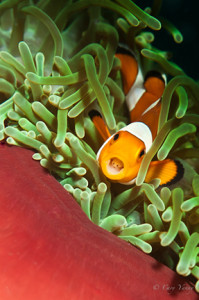 The reefs are dotted with enormous barrel sponges on the vertical sections and reef sharks, eagle rays, red tooth triggerfish, pyramid butterflyfish and schools of jacks can be spotted there. The ‘shoulder’ of the reef, from about 10m to the surface, is simply incredible in terms of coral coverage and sheer beauty. It’s certainly one of the most colourful sites we’ve ever seen underwater; the soft coral is home to clouds of thousands of damselfish, anthias, sergeant majors and clownfish. As the reef comes so close to the surface, it’s also a perfect spot for families with snorkellers (but don’t expect a developed holiday destination with entertainment laid on for the kids. North Sulawesi is a ‘real place’; if your kids like watching Nat Geo Channel go ahead and book a holiday). In the deep waters of Manado Bay, between the mainland and the islands, you can often spot pods of dolphin or pilot whale. There’s even occasional sightings of sperm whale and orca in the bay during their migration time.
The reefs are dotted with enormous barrel sponges on the vertical sections and reef sharks, eagle rays, red tooth triggerfish, pyramid butterflyfish and schools of jacks can be spotted there. The ‘shoulder’ of the reef, from about 10m to the surface, is simply incredible in terms of coral coverage and sheer beauty. It’s certainly one of the most colourful sites we’ve ever seen underwater; the soft coral is home to clouds of thousands of damselfish, anthias, sergeant majors and clownfish. As the reef comes so close to the surface, it’s also a perfect spot for families with snorkellers (but don’t expect a developed holiday destination with entertainment laid on for the kids. North Sulawesi is a ‘real place’; if your kids like watching Nat Geo Channel go ahead and book a holiday). In the deep waters of Manado Bay, between the mainland and the islands, you can often spot pods of dolphin or pilot whale. There’s even occasional sightings of sperm whale and orca in the bay during their migration time.
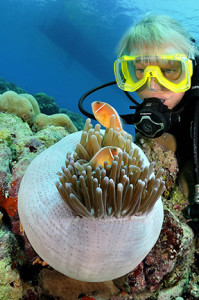 The Southern section of Bunaken National Park offers some great sites full of critters and colourful smaller coral walls and gardens. (Dr Erdmann and his associate Dr Gerry Allen conducted an extensive scientific fish survey in the Southern section a couple of years ago and counted so many different fish species here that it now ranks in third place on the fishy variety scale – worldwide!)
The Southern section of Bunaken National Park offers some great sites full of critters and colourful smaller coral walls and gardens. (Dr Erdmann and his associate Dr Gerry Allen conducted an extensive scientific fish survey in the Southern section a couple of years ago and counted so many different fish species here that it now ranks in third place on the fishy variety scale – worldwide!)
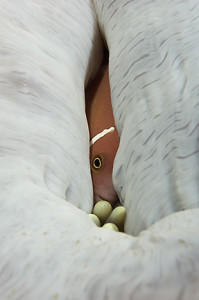 Although Manado can be dived year-round, the best sea conditions and most vibrant colours are experienced during the dry season months of April to Oct/Nov. Climate is hot and humid with air temperatures in the 28-31C range and water between 26-29C.
Although Manado can be dived year-round, the best sea conditions and most vibrant colours are experienced during the dry season months of April to Oct/Nov. Climate is hot and humid with air temperatures in the 28-31C range and water between 26-29C.
Manado is the capital of North Sulawesi province of Indonesia. North Sulawesi offers excellent resorts and dive centres to round off the offering on the ground. Getting there is comfortable with flights on Singapore Air/SilkAir via Singapore Changi Airport and you can combine a stay in Manado with arguably the world’s best ‘muck’ diving at North Sulawesi’s other jewel, the famous Lembeh Strait. Or even combo further afield with Indonesia’s other iconic dive spots of Raja Ampat, Bali or Komodo (all coming in future editions of our Indonesian dive guide).
* For safety reasons, Eco Divers Manado operates a strict time-limit policy of maximum 60 minutes on drift-dives. All guests are advised to carry a DSMB.
For more information, visit www.diversetravel.co.uk/destinations/indonesia.
Marine Life & Conservation
Steve Backshall to headline Shark Trust’s flagship event: For the Love of Sharks

Join a host of amazing, shark loving, speakers including Steve Backshall and the Shark Trust team for an evening celebrating shark conservation at the Royal Geographical Society in London this November.
Date: 29th November 2024
Time: 6-10pm
Location: Royal Geographical Society, London
Tickets: https://www.sharktrust.org/Event/flos24
The event will be a celebration of all things shark. Those lucky enough to get hold of tickets will hear from engaging guest speakers with a passion for sharks.
The line-up includes (*subject to change if unforeseen circumstances arise)
Steve Backshall: One of television’s busiest presenters, BAFTA award-winning wildlife expert Steve has been passionate about the wild world ever since he was young.
Steve’s impressive TV career has taken him all around the world, investigating a wide array of species and environments. Steve has filmed over 100 hours of children’s wildlife programmes with the BAFTA award winning Deadly 60 franchise and recently, with Sky Nature, for his new series ‘Whale with Steve Backshall’. He has been a patron for the Shark Trust for 10 years.
Simon Rogerson: is a photojournalist specialising in natural history, diving and the sea.
He is editor of SCUBA magazine, the official journal of the British Sub-Aqua Club. Simon started his career as a crime reporter but gravitated towards his ‘less depressing’ interest in underwater exploration, joining the staff of DIVE magazine in 1999. In 2005 he was named ‘Editor of the Year’ in the PPA’s Independent Publishing Awards. Simon also works as a freelance writer, contributing frequently to the Sunday Times and Telegraph, in addition to BBC Wildlife, Esquire, and a host of international diving magazines. He is the author of a book, Dive Red Sea, published by Ultimate Sports. Now based in Berkshire, Simon has been a Patron of the Shark Trust for 20 years.
More speakers to be announced soon. Head to the Shark Trust website to learn more.
The evening will also allow guests the final chance to see the Oceanic 31, shark art exhibition. Some of the artwork will be auctioned/raffled at the event, while the rest will be auctioned online to raise money for the Shark Trust Oceanic Programme.
For the Love of Sharks is an evening with something for everyone who is interested and fascinated by sharks. Join the Shark Trust, their Patrons, Trustees and Staff, along with a host of supporters for this celebration of shark conservation.
For more information or to buy a ticket: https://www.sharktrust.org/Event/flos24
News
Stay Longer for Less at Temple Point, Kenya with Dive Worldwide
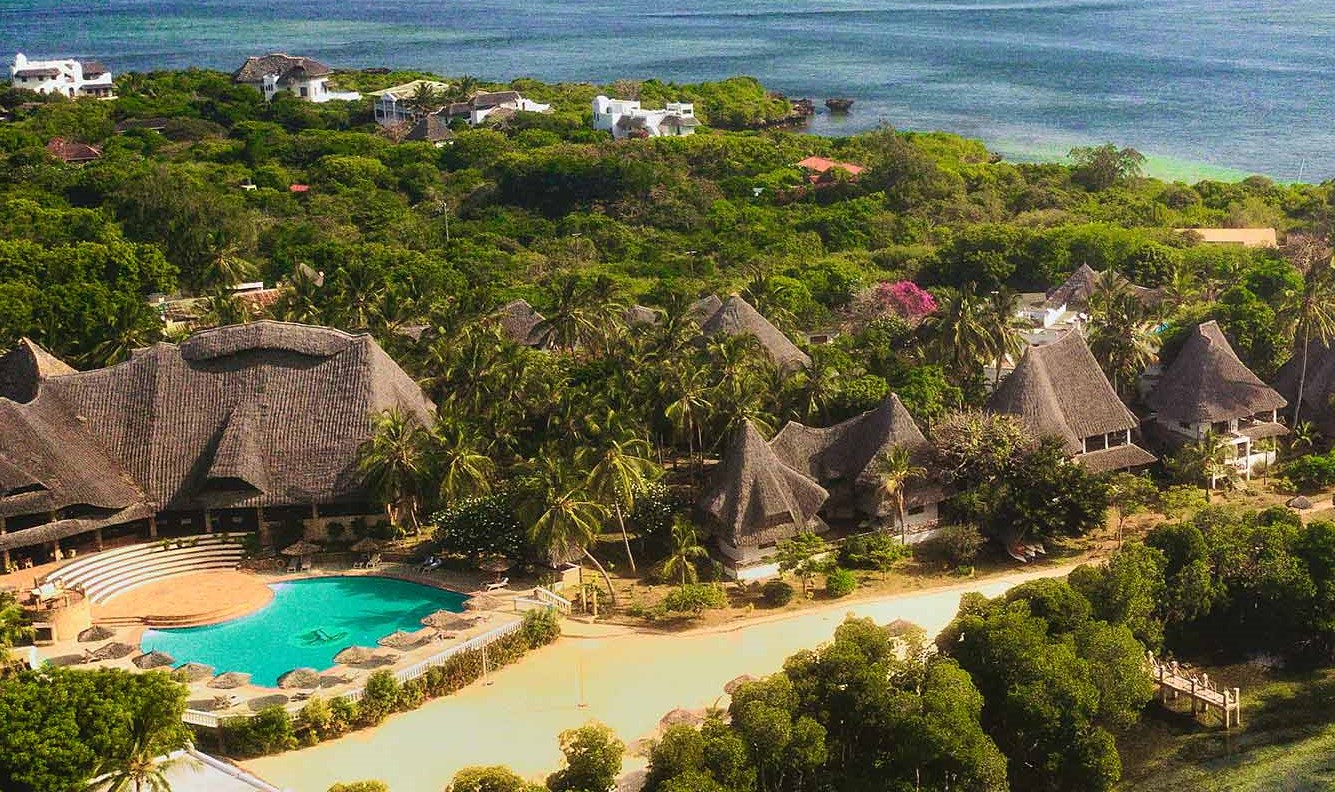
Dive Worldwide has recently introduced Kenya to its portfolio of dive destinations, making it a new must-visit for divers. The company has chosen Temple Point Resort, located in Watamu, a small town on Kenya’s Indian Ocean Coast. The resort embodies the spirit of Kenya, with thatched roof buildings and bright white interiors, complemented with local art. The Creek Deluxe rooms enjoy a creek view and sunset vistas, whilst Boutique Garden rooms offer peace nestled in lush greenery.
An abundance of activities such as golf, stand up paddleboarding and kite surfing await those looking for action; while those in search of rejuvenation may partake in a range of yoga classes, or indulge in the spa. Spend evenings dining poolside dining or lazing in hammocks suspended over the creek; there is no detail missed at Temple Point.
The waters surrounding Temple Point Resort are bustling with life, however, there is also an opportunity to explore on dry land. Tsavo National Park is close enough for a day safari, allowing guests to double up on the wildlife experiences Kenya has to offer, from elephants to whale sharks.
Suggested Dive Itinerary: Dive and Discover Kenya
Embark on an adventure to one of Africa’s finest marine parks, Watamu, the first of its kind in the continent. Created in 1968, Watamu offers excellent diving and snorkelling for those of all experience levels. Lively coral reefs and the surrounding waters are home to over 1,000 species of fish, devil rays, mantas, whale sharks, dolphins and turtles.
DEAL: Stay 12 nights for the price of 10 at Temple Point Resort
Price: Dive and Discover Kenya now costs £2295pp, saving £150 per person. Including international flights from the UK, 12 nights’ B&B (for the price of 10), transfers, 5 days, 10 dive pack, tanks and weights. Based on travel in September ONLY. https://www.diveworldwide.com/trip-ideas/dive-discover-kenya#details
For more information visit: diveworldwide.com or call 01962 302 087
-

 News3 months ago
News3 months agoHone your underwater photography skills with Alphamarine Photography at Red Sea Diving Safari in March
-

 News3 months ago
News3 months agoCapturing Critters in Lembeh Underwater Photography Workshop 2024: Event Roundup
-

 Marine Life & Conservation Blogs3 months ago
Marine Life & Conservation Blogs3 months agoCreature Feature: Swell Sharks
-

 Blogs2 months ago
Blogs2 months agoMurex Resorts: Passport to Paradise!
-

 Blogs2 months ago
Blogs2 months agoDiver Discovering Whale Skeletons Beneath Ice Judged World’s Best Underwater Photograph
-

 Gear Reviews3 weeks ago
Gear Reviews3 weeks agoGEAR REVIEW – Revolutionising Diving Comfort: The Sharkskin T2 Chillproof Suit
-

 Gear Reviews3 months ago
Gear Reviews3 months agoGear Review: Oceanic+ Dive Housing for iPhone
-

 Marine Life & Conservation2 months ago
Marine Life & Conservation2 months agoSave the Manatee Club launches brand new webcams at Silver Springs State Park, Florida


